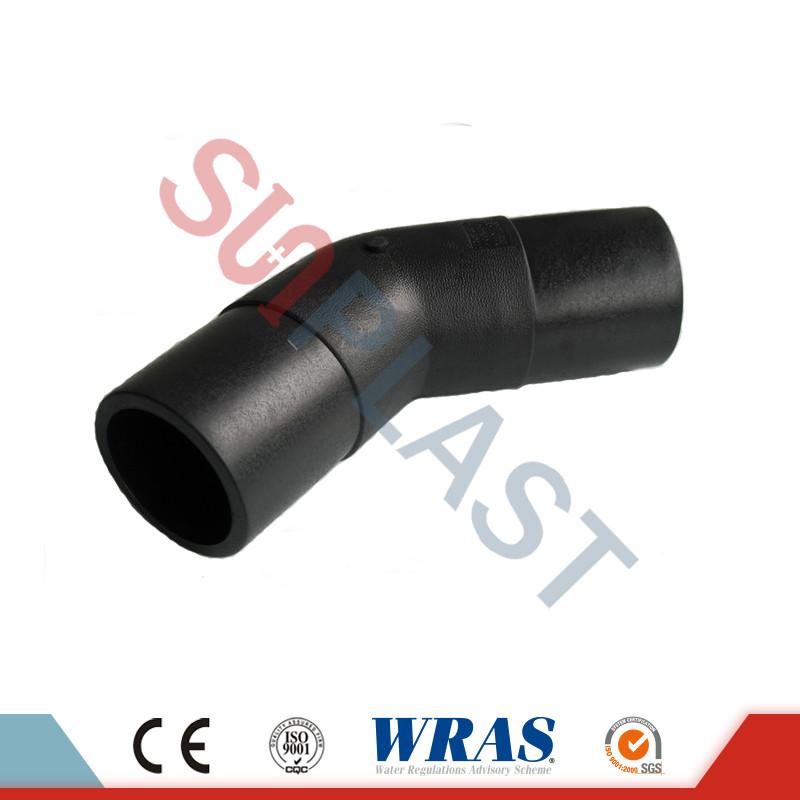How does the butt fusion process work for joining HDPE pipes using 22.5 degree elbows?
2023-10-17
The butt fusion process is a reliable method for joining HDPE (High-Density Polyethylene) pipes, including the use of 22.5 degree elbows, to create a seamless and leak-free connection. Here's a step-by-step overview of how the butt fusion process works for joining HDPE pipes using 22.5 degree elbows:
1. Preparation: Start by preparing the HDPE pipes and fittings for the butt fusion process. Ensure that the pipe ends and the inside surfaces of the 22.5 degree elbows are clean, free from any dirt, debris, or moisture. Proper cleaning is crucial to achieving a strong and consistent fusion.
2. Marking: Use a marker or a suitable tool to mark the insertion depth on each pipe. This mark indicates how far the pipe should be inserted into the 22.5 degree elbow during the fusion process.
3. Heating: Next, use a butt fusion welding machine to heat the ends of the HDPE pipes and the inner surfaces of the 22.5 degree elbow to the appropriate fusion temperature. The fusion temperature is typically specified by the manufacturer or is based on the material and pipe size being used.
4. Alignment: While the pipes and the 22.5 degree elbow are still hot, align them according to the marked insertion depth. Make sure the ends are in full contact with the fitting.
5. Fusion Pressure: Once properly aligned, apply fusion pressure to the pipe ends and the fitting, ensuring that they are firmly pressed together. The applied pressure helps to create a molecular bond between the molten HDPE material, ensuring a strong and secure joint.
6. Cooling and Solidification: Allow the heated joint to cool and solidify. This cooling process allows the melted HDPE material to re-solidify, forming a continuous and homogenous bond between the pipe and the fitting.
7. Cooling Time: The cooling time required depends on the pipe size and wall thickness, as well as the ambient temperature. The cooling process should not be rushed, as it is essential for achieving the proper fusion.
8. Inspection: After the fusion joint has cooled, inspect the joint to ensure that it is properly fused and that there are no visible defects or irregularities.
9. Pressure Testing (Optional): If required by the project specifications, conduct a pressure test to verify the integrity of the fusion joint and ensure it is leak-free.
It's important to note that the butt fusion process requires specialized equipment, including butt fusion welding machines and heating plates, to achieve the necessary fusion temperatures and pressures. Proper training and certification are also essential for individuals performing butt fusion welding to ensure the process is executed safely and effectively.
By following these steps, the butt fusion process ensures a robust and durable connection between HDPE pipes and 22.5 degree elbows, contributing to the reliability and efficiency of the overall piping system.



